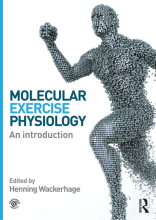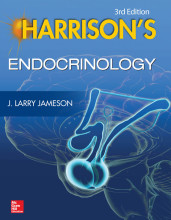Summary: Maximal Neuromuscular Performance
- This + 400k other summaries
- A unique study and practice tool
- Never study anything twice again
- Get the grades you hope for
- 100% sure, 100% understanding
Read the summary and the most important questions on Maximal Neuromuscular Performance
-
Voorbereiding Totaal
This is a preview. There are 1 more flashcards available for chapter 01/09/2017
Show more cards here -
Name the basic anatomy of a skeletal muscle cell:
- epimysium
- basal lamina
- sarcolemma
- myofibrills
- sarcomere
- actin
- myosin
-
What do the 'bands' in sarcomeres stand for?
Z band: the connection between sarcomeres
M band: the tissue that connects myosin filaments in the middle of a sarcomere
I band: zone of actin filaments that do NOT overlap with myosin filaments
A band: the entire length of myosin filaments
H band: the zone of myosin filaments that does NOT overlap actin filaments -
Describe the contraction of a muscle fiber:
- Actiepotentiaal
- Voortgeleiding via T-tubuli
- Vrijkomen Ca2+ uit het sarcoplasmatisch reticulum
- Binden Ca2+ aan Tn-C
- Vrijkomen aankoppelpunt op actine door wegdraaien tropomyosine
- Koppelen S1 aan actine
- Powerstroke
- Ontkoppelen van S1 door binden ATP aan S1
- Actiepotentiaal
-
What does the Force-Velocity relationship explain?
relatively high forces are attained at relatively low contractile velocities -
Considering the Force-Velocity relationship, when is maximal Power attained?
At 30% of the maximal contractile velocity. -
Explain the crossbridge kinetics during 1 powerstroke:
- ATP binds myosin head
- Myosin head is released from actin
- ATP is phosphorylated into ADP and Pi
- Myosin head binds actin
- Powerstroke
- ADP leaves the myosin head
-
What is a muscle twitch?
A composed actionpotential (M-wave) that induces a short burst of Force. -
What is a Tetanus?
A series of twitches that follow in rapid succession. -
Explain the Stimulation frequency - Force relationship
Calcium is key here, electrical stimulation enables an action potential to release Ca2+ from the SR. The Ca2+ induces a contraction. The more often you stimulate the Ca2+ release, the more contractions up till the point the Ca2+ cannot be cleared fast enough which results in a plateau of the generated Force. -
Artikelen College 1
This is a preview. There are 3 more flashcards available for chapter 02/09/2017
Show more cards here -
What was the aim of the study on box jumps?
To study the relation between two common force modifications in skeletal muscle:- prolonged force depression induced by unaccustomed eccentric contractions
- residual force depression observed immediately after active shortening
- prolonged force depression induced by unaccustomed eccentric contractions
- Higher grades + faster learning
- Never study anything twice
- 100% sure, 100% understanding
Topics related to Summary: Maximal Neuromuscular Performance
-
Artikel Change in contractile properties and fatigue
-
Artikel voluntary activation does not represent relative voluntary torque
-
Artikel metabolic recruitment at different intensities
-
Artikel Temperature effect Force/Velocity fresh and fatigue
-
Artikel high frequency posttetanic
-
Artikel myosin phosphorylation and potentation
-
Artikel Oxygen Near Infrared
-
Artikel young man
































